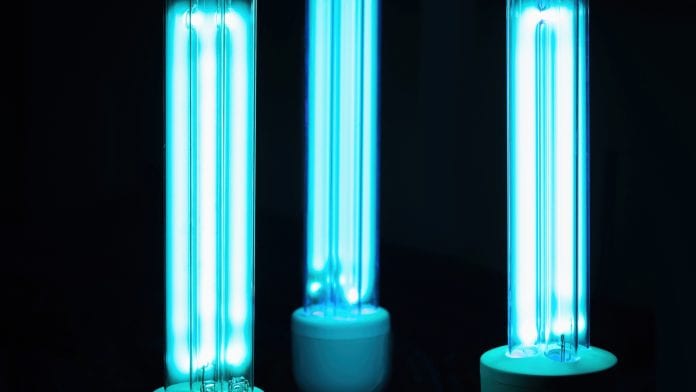
The application of ultraviolet light (UVC) light could improve the efficacy of 400 common disinfectants against COVID-19, as well as making them safer for both people and the environment.
Benzalkonium chloride (BAK) is the most common active ingredient in many disinfectants and protects against a wide range of viruses and bacteria – including all strains of SARS-CoV-2, which causes COVID-19. However, the ingredient’s toxicity means it cannot be used in high concentrations, and that products containing BAK are harmful to humans and the environment.
A new study from the University of Waterloo has shown that the chemical’s toxicity could be fully neutralised using UVC when tested on cultured human corneal cells.
BAK is regularly used in hospitals, households, and food processing plants, and is especially toxic to fish, aquatic invertebrates, and birds.
Neutralising BAK
BAK is a severe human skin and eye irritant, and its high toxicity limits the ability to use products with a high concentration to better protect against harmful viruses and bacteria.
For the study, the research team exposed a BAK solution to germicidal ultraviolet-C lamps, applying the solution to cultured human corneal cells for five minutes. The team analysed for cell metabolic activity and viability, finding that the BAK solutions were completely neutralised by UVC as the solutions no longer harmed the cultured human corneal epithelial cells.
Dr David McCanna, of Waterloo’s Department of Optometry & Vision Science, said: “Our results show that a disinfecting procedure using BAK followed by UVC radiation can minimise the harmful effect of BAK residues on humans and the environment. Such a procedure also has a great potential to maximise the disinfection efficacy by utilising two different antimicrobial mechanisms.
“As the pandemic continues, our findings are especially important as it provides another method to make our hospitals, food, homes, and the environment safer.”
“With concerns about the spread of COVID-19, people are utilising products with BAK as an active ingredient more than ever,” said Waterloo alumnus and lead author Dr Manlong Xu, who is currently a clinical research fellow in the University of Alberta’s Department of Ophthalmology and Visual Science.
“For many industries, there is the demand to improve the efficacy of standard disinfection procedures, while also keeping in mind any potential negative impact on the environment.”








